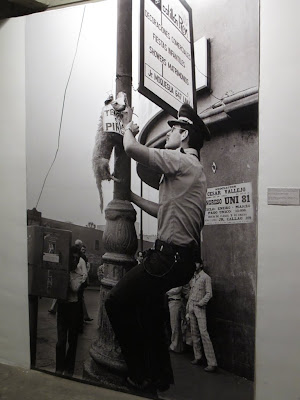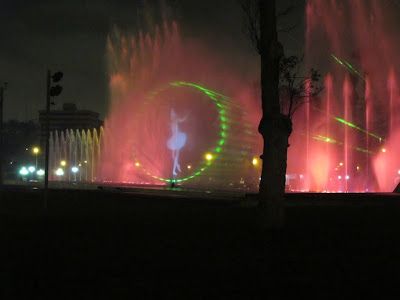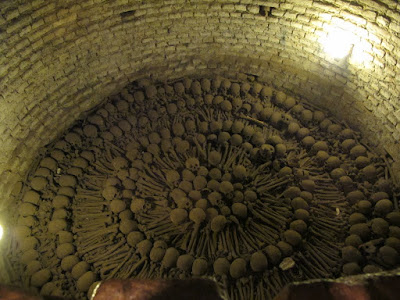 |
| The Presidential Palace (Formerly Francisco Pizzaro's Residence) |
Lima, the
“City of Kings” was founded by the great Spanish conquistador Francisco Pizzaro.
Nowadays it is a modern city, the fifth largest in Latin America in fact and at the
opposite end of the spectrum from the no-electricity-no-running-water-no-toilet
trek we just did.
We take a taxi to our Hostel which is in the very touristy
and somewhat uppermarket Miraflores neighbourhood. We check-in and decide to
hit town straight away. It’s only 6.30 a.m. and the city is slowly waking up. The
cleaning trucks are finishing up their night shifts and garbage has been
collected. Traffic is slowly picking up
and cafés are setting up shop for people to have a some coffee on the go
before work. I love this time of the day.
We discover
Lima and find comfort in some of the
things a big city has to offer : museums, comfortable shopping centers, nice
restaurants, modern transport system … after travelling for one month in South
America we appreciate some comfort if only for a brief moment.
So, with our
“Town Mouse” costumes decidedly on we visit the Museo de la Nacíon. There is a
photo exhibition celebrating the 100th anniversary of the
re-discovery of Macchu Picchu and a very comprehensive expo on all the
civilisations that lived in Peru from 7600 B.C. to modern day.
 |
| A policeman and removing a hanged dog |
The best
part of the museum is a work of remembrance on the Internal Armed Conflict that
plagued Peru in the 80’s until late 90’s. During this period, about 70.000
Peruvians (mostly civilians) died. “Shining Path”, a terrorist (Maoist)
organization was responsible for about half of the deaths. The army and secret service taking
direct orders from the government was responsible for the unjust arrest and
summary execution of almost 30% innocent people. To learn more : Wikipedia : Internal conflict Peru and photos from our visit Armed Conflict Peru

Then we enjoyed a very nice water show (son et lumière) in the Parque de la Reserva
 |
| Francisco Pizzaro and "the line in the sand" |
The
following day we start with a walk in the centre. We visit the main Cathedral
where Francisco Pizzaro’s remains are. This cathedral is one of the richest
we’ve seen here or in Europe. Every single chapel is lavishly decorated, a testimony of Lima's importance as the main gateway to Europe during the Spanish
conquest of the Americas.
 |
| That's a lot of bones (and it's 7m deep) |
Then we pay a visit to the catacombs. This is where
all the poor people were buried. The excavation works are still going on but
more than 80.000 thousand skeletons have been found so far.
That evening we
treat ourselves to a very nice sea food restaurant only 5 minutes away from
home. Peruvian gastronomy (of European, Chinese and Indegenous influence) is
slowly making its mark on the world scene.
That’s handy ! My Octopus, clams and fish Ceviche (wiki
Ceviche) with a coulis
of coriander pesto was to die for and Roxana’s Black Risotto with baked octopus was equally delicious.
The next
day Roxana decides to get her shoes waxed ... after all we’re going to see the
Peru National Ballet that evening. While
she waits I pop into the best football pub I’ve seen in a long time. A football
temple, big screens everywhere, one of which in 3-D, beers flowing abundantly
from the taps, and look, all the stars are here : good morning King Pele Sir,
and here is Maradona ... if you sit at table 7, David Beckham will be taking your
order! Impressive! Anyway I have time to see ManU leading Chelsea by 3 goals
to nil (great goal by Nani btw), don’t know what the final score was.
The show
that evening was excellent. The Peru National Ballet (photo :
Peru National Ballet) offered a modern dance
performance from Jimmy Gamonet. After
all this pampering, we’re ready for some hard core desert stuff now…
For more photos of
Lima ...